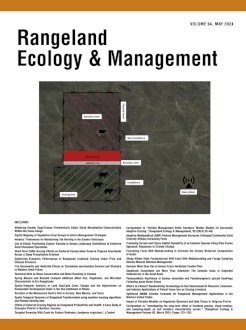Adaptive multipaddock (AMP) grazing is a form livestock management that uses high stock density, frequent herd rotation, and long adaptive plant recovery periods to produce punctuated disturbances within pastures. This form of livestock management may benefit pasture biodiversity and ecosystem function. Arthropods are key to ecosystem functionality through the fulfillment of many ecological niches in pasture ecosystems like dung burial, pest control, and pollination. However, the effect of AMP grazing on arthropod communities has not been well studied. We assessed the effect of AMP grazing on arthropod community composition. Foliar, soil, and dung arthropod communities were collected from AMP and conventionally grazed (CG) pastures located in the southeastern US. Arthropod abundance, species richness, diversity, and guild composition were compared between grazing treatments. The herbaceous standing plant diversity was recorded in the immediate vicinity of arthropod sampling. AMP grazed pastures exhibited higher foliar arthropod species richness, along with higher foliar and dung guild diversity. The effects of AMP grazing on the arthropod community were likely correlated to changes to the vegetative community resulting from AMP grazing. No differences in pest abundance or species diversity were found between the AMP and CG pastures. This study shows AMP pasture management has a positive effect of arthropod community composition, which is likely to be an important mechanism to facilitating ecosystem services in AMP pastures.
How to translate text using browser tools
17 May 2024
Adaptive Multipaddock (AMP) Pasture Management Increases Arthropod Community Guild Diversity Without Increasing Pests
Ryan B. Schmid,
Kelton D. Welch,
Richard Teague,
Jonathan G. Lundgren
ACCESS THE FULL ARTICLE

Rangeland Ecology and Management
Vol. 94 • No. 1
May 2024
Vol. 94 • No. 1
May 2024
biodiversity
Holistic livestock management
invertebrate conservation
regenerative agriculture




